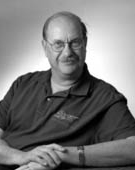
Handy Links
SLAC News Center
SLAC Today
- Subscribe
- Archives: Feb 2006-May 20, 2011
- Archives: May 23, 2011 and later
- Submit Feedback or Story Ideas
- About SLAC Today
SLAC News
Lab News
- Interactions
- Lightsources.org
- ILC NewsLine
- Int'l Science Grid This Week
- Fermilab Today
- Berkeley Lab News
- @brookhaven TODAY
- DOE Pulse
- CERN Courier
- DESY inForm
- US / LHC
SLAC Links
- Emergency
- Safety
- Policy Repository
- Site Entry Form

- Site Maps
- M & O Review
- Computing Status & Calendar
- SLAC Colloquium
- SLACspeak
- SLACspace
- SLAC Logo
- Café Menu
- Flea Market
- Web E-mail
- Marguerite Shuttle
- Discount Commuter Passes
-
Award Reporting Form
- SPIRES
- SciDoc
- Activity Groups
- Library
Stanford
Around the Bay
Bob Siemann Has Passed Away

Bob Siemann, a central leader in SLAC accelerator research for seventeen years, passed away last week. His legacy to SLAC includes a strong academic research program in advanced accelerator research, and many grateful recipients of his rigorous and enthusiastic mentorship.
"Bob was truly a great accelerator physicist. He was widely respected throughout the high energy physics community for his capability in accelerator physics as well as his intellectual integrity," said head of Accelerator Research Tor Raubenheimer. Siemann was elected chair of the American Physical Society Division of Physics of Beams in 1995, and was a fellow of both the APS and the American Association for the Advancement of Science. He was also a member of the Institute of Electrical and Electronics Engineers.
Siemann completed his bachelor's degree in physics at Brown University, and his doctorate at Cornell University. His first association with SLAC was as a research associate, 1969 to 1972. After a year as a physicist at Brookhaven National Laboratory, he joined the faculty of Cornell, where he grew from assistant professor to full professor and a recognized leader in his field. He joined SLAC in 1991, and helped bring in a new Stanford academic program in advanced accelerator physics.
"When we recruited Bob, he asked why accelerators, which were at the heart of the lab's activity, were not also part of its academic charter," said SLAC Director Emeritus Burton Richter. "He was a regular professor at Cornell and it was clear to me that he would not come here any other way."
"After many hoops and many committees, we got the change we asked for and got Bob, too," Richter said. "Bob not only brought us his vision of advanced accelerator science, but also a new charter that has been of great benefit to the lab ever since."
When he arrived at SLAC, Siemann focused on the Stanford Linear Collider and played a central role in understanding some of the fundamental accelerator physics of that experiment. In the mid-1990ís, he started a key effort on advanced acceleration techniques that will be critical for accelerators of the future. He was also instrumental in creating the widely respected peer-reviewed journal for accelerator physics, the Physical Review Special Topics - Accelerators and Beams, and worked as the first editor for nine years.
"He was uncompromising in his high standards as journal editor and as a scientist," said Eric Colby of SLACís Advanced Accelerator group. "He managed to preserve an academic character in the Advanced Accelerator Research Department that was unusual for a national lab setting. This character, together with his excellent mentoring, made AARD very attractive to students and staff alike."
"He enjoyed working with his students more than anything else," said Colby. "He also loved designing and making instrumentation electronics, and viewed learning to wire-wrap circuits as an essential right of passage for his grad students."
"The care and pride he showed in teaching left an indelible impression on all of his students," noted Mark Hogan, also of the Advanced Accelerator group.
Bob leaves behind his wife Hannah, his daughters Francesca, Gabriella and Liese, and his son Evan. Funeral arrangements will be announced later this week.
óSLAC Today, September 22, 2008